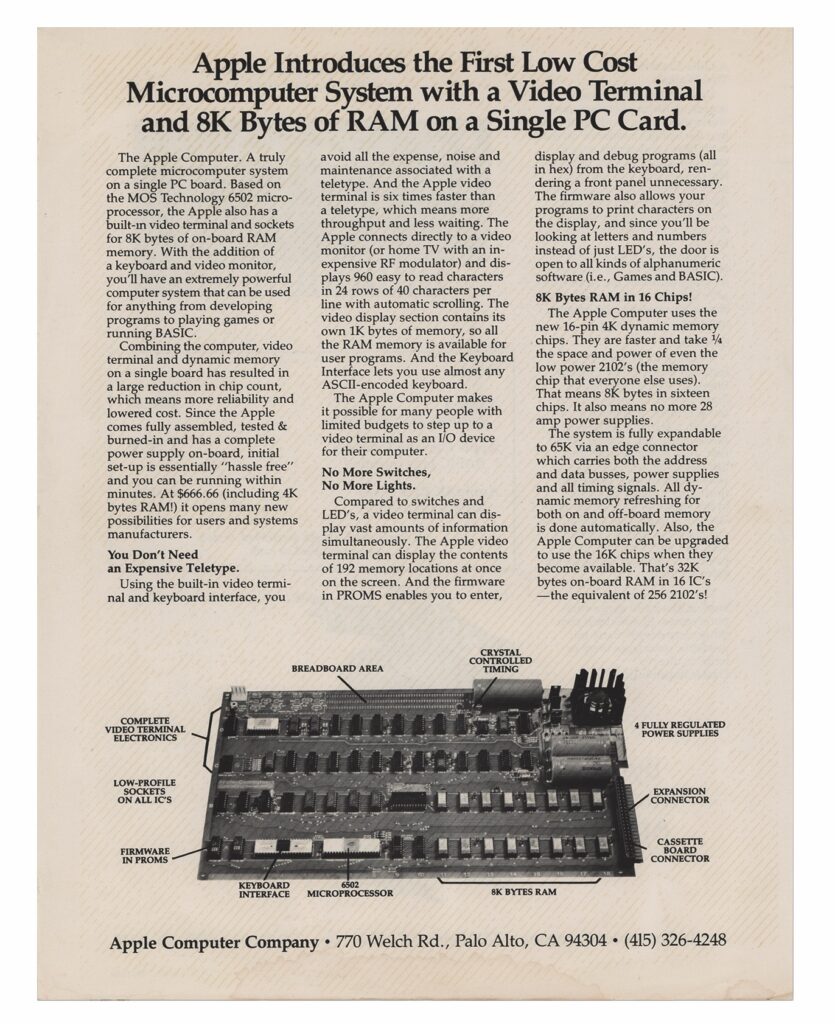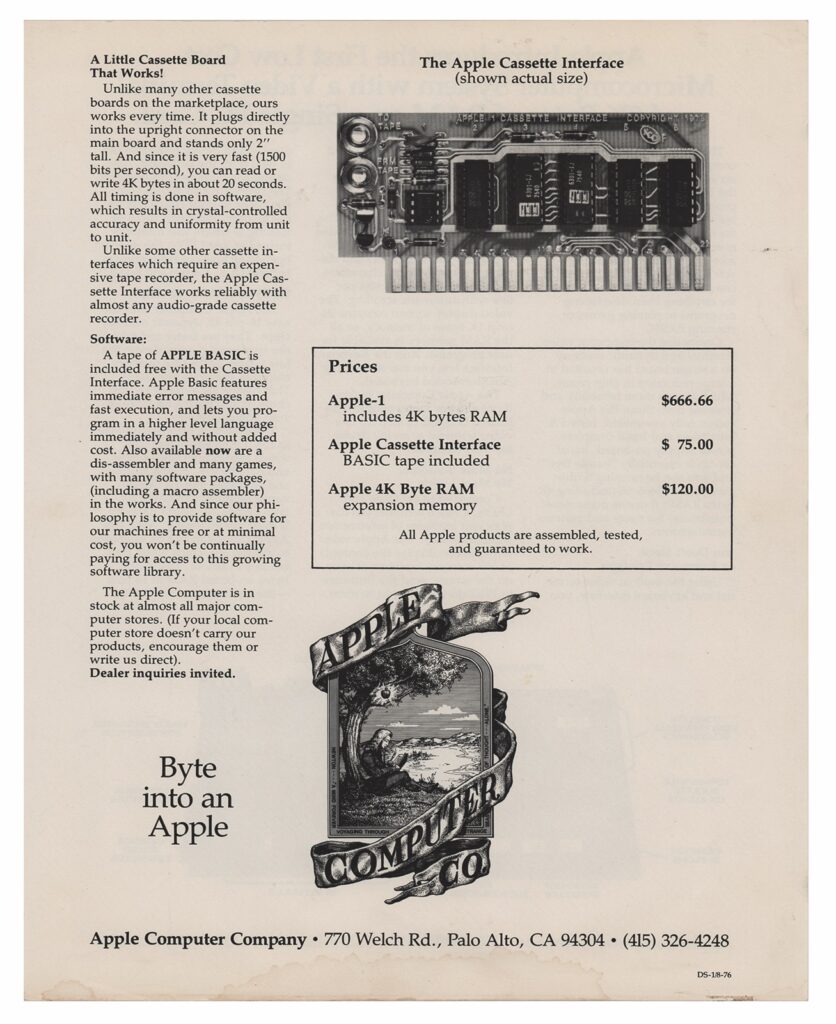by Brooke Kennedy
Update: The advertisement handwritten by Steve Jobs for the Apple-1 circuit board sold in RR’s August Apple, Jobs, and Computer Hardware auction for $175,759.
It’s an enterprise that intersects art and science, but the company’s success did not come so easily.
A juggernaut in the world of tech, Apple has nailed its marketing to a T. However, since the company’s inception in 1976, Apple has released some advertisements that range from memorable to mediocre. And while the company prides its strategy on its simple nature, the journey to mold that image was anything but.
Where it All Began
Upon the founding of the Apple Computer Company, the revolutionary Apple-1 was still in development. But while they were on their way to a fully functional product, they needed a way to get people to buy it.
In the company’s very early stages, its focus was mainly on print advertisements which read more like flyers than eye-catching campaigns.

“Apple’s 1st advertisement in the July 1976 issue of Interface Magazine…was accompanied by a product overview article in the same issue written by R.S. Jones, “Comparing Apples and Oranges” with quotes by Steven Jobs, Director of Marketing, and Stephen Wozniak, Director of Engineering,” according to RR Auction’s Apple historian Corey Cohen.
Another one of their first ads – originally conceptualized by Steve Jobs early in the building process – was text heavy and colorless, focusing on outlining the features of the device rather than catching the viewer’s attention or provoking an emotional response.
The Apple-1 was originally pitched as a bare circuit board part of a kit that buyers would assemble themselves. Jobs outlines several details about these circuit boards in his first ad draft.
“Uses 6800, 6501, 6502 (6501, 6502 recommended because we have basic).” Jobs writes, and then proceeds to give an onboard breakdown. “All Power Supplies, 8K bytes of RAM (16 pin 4K dynamic)… fully expandable to 65K via edge connector, 58 ic’s which includes 16 for 8K ram!”


According to Cohen, the information in this historic early draft matches well with the printed version, “Based on the MOS Technology 6502 microprocessor, the Apple also has a built-in video terminal and sockets for 8K bytes of on-board RAM memory…The system is fully expandable to 65K via an edge connector.”
This idea quickly shifted after Paul Terrell, owner of The Byte Shop in Mountain View, California expressed interest in selling their computers – if they were fully assembled. Thus, Jobs and Wozniak went to work, creating one of the first personal computers for the average consumer. Within a span of ten months, the duo produced around 200 working computers and sold 175 of them.
“During the time that the Apple-1 was in progress, I visited Steve several times…and saw computers being tested in boxes in the garage,” said the consignor of the ad. The consignor became fast friends with Jobs while they were in the 8th grade. “It was during one of these visits that Steve gave me a Polaroid photo of the computer, a Polaroid screenshot of Apple 1 Basic, and a handwritten offer of bare boards for $75 each.”
While this ad was far from successful, it marked the beginning of Jobs’s heavy involvement in the company’s marketing.
“This first marketing blitz is what brought attention to Apple and provided a gateway into the funding needed for two guys in a garage to become some of the most influential people in the later 20th century,” said Cohen.
1984 Wasn’t Like ‘1984’
Their first big ad that caught the attention of the general public aired during the 1984 Super Bowl. At the time of airing, IBM was the biggest company in the computer sphere so Apple had their work cut out for them.
The commercial plays off of George Orwell’s novel Nineteen Eighty-Four to promote their Macintosh computer released that same year. Apple envisioned a world that is dominated by IBM. Speaking through a telescreen, Big Brother – a motif present in Orwell’s original novel – gives his speech to a crowd of people in gray jumpsuits. Police officers in black uniforms are in pursuit of a jogger carrying a sledgehammer, which she famously tosses at the screen resulting in a flurry of sparks and smoke.
While their compelling sci-fi narrative struck a chord with audiences and is now considered a masterpiece, the company was still having trouble figuring out its style. A year after this ad’s airing, Steve Jobs left the company, but would soon make a return in time for Apple’s most influential marketing venture.
Convincing the World to “Think Different”
It wasn’t until the 1990s when Apple’s marketing really began to find its footing. Featuring a host of famous faces from every field, the 1997 ‘Think different’ campaign set Apple apart from its far larger competitors.
This marked the company’s first major attempt to prioritize style and emotion over text, and the positive response even caused ‘Think different’ to become Apple’s new slogan. Unlike previous efforts, this campaign centered the company’s mission on the emotional connection people have with technology – a motif still present in their current promotional material. And its simplicity still informs the company’s branding, all the way down to its product packaging.
“‘Think Different’ wasn’t solely responsible for the upturn in Apple’s fortunes in the years after it ran,” according to the Creative Review, “but it played an extremely important role in rallying customers, employees and shareholders at a very difficult time for the company. It restated the brand and its aspirations.”
Though Jobs did not come up with the campaign slogan (credit for that goes to Craig Tanimoto), he still contributed using his personality and hefty rolodex.
“He personally called the Henson and Kennedy families to obtain permissions and went all the way to New York to convince Yoko Ono to let him use a particular picture of her and John Lennon.”
Steve Jobs would sustain this commitment to the company’s marketing by giving each new ad his personal approval. Apple has continued to hold onto their success in the marketing sphere – with the Mac vs. PC and the Shot on iPhone campaigns being particular stand-outs.
The evolution of Apple’s marketing showcases not only the growth of the company but the growth of Steve Jobs as well. He understood the importance of making a good product, but he didn’t underestimate the power of marketing it.


